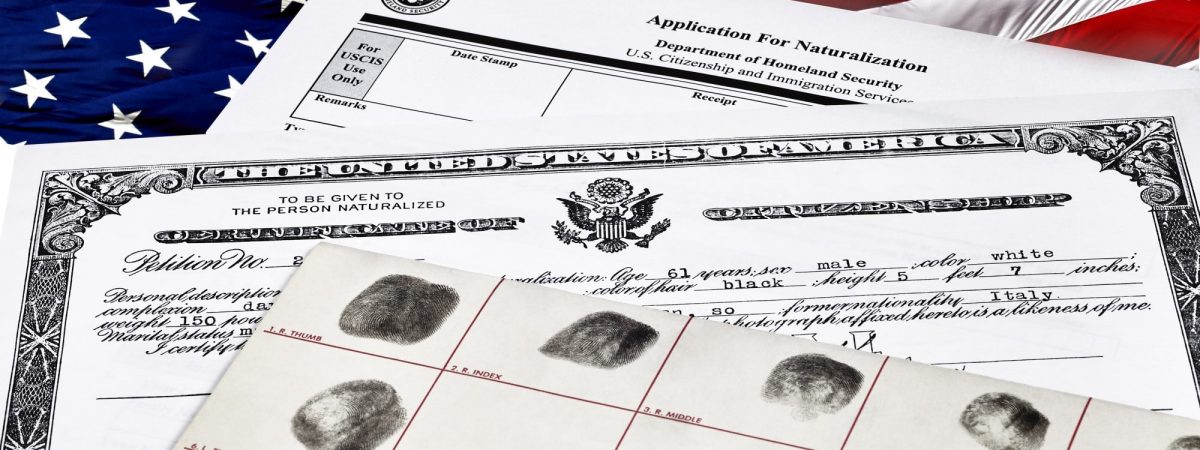In the digital age, there are not many essential documents left. But even as technology advances, there is one document that all travelers must carry and care for to avoid hiccups on their journeys. For citizens traveling abroad or flying into the country, the U.S. passport is the way to ensure they are not met with resistance at the border. It wasn’t until after 2001—as people on the border town of El Paso might remember— that passports became required to cross to and from Mexico at the international bridges. Yet, the document has a rich history that says a lot about changes in immigration across the decades.
So what’s the story behind this document and the highly recognized blue booklet that many immigrants cherish?
The Creation of the U.S. Passports
Today’s official passport booklets have come a long way from the early documents of the 1700s. Some of the most remembered U.S. passports were those handed off by Benjamin Franklin, as he worked as a U.S. representative in France. Instead of the document being a legal necessity or a form of identification, it was more of a reference letter or a verification of one’s character.
In these early days of the passports, mostly men of some prominence were given the honor of carrying them. They did not have photos or personal information or any kind of link that would connect the document to the person. The assumption at the time was that one carrying such a document could be nothing other than a gentleman of high class and of some importance.
In the 1800s, these documents became a little more widely accessible but were still not required to travel abroad. It was considered much more of a travel addendum than a requirement for identification and safety purposes.
The Modern Idea of the Passport After World War I
It was not until the aftermath of World War I that nations became much more vigilant and began requiring passports. In 1920, the idea of the passport — in the modern sense— was born. It was not long after that the United States passed major immigration legislation and quotas that would require the use of this passport.
Both America and European countries suddenly became very interested in who was crossing their borders. Original passports had no particular requirements on the photo. Early passports can be found with photos of people relaxing with their dogs, riding a horse, or playing a musical instrument.
Today, of course, the photos are not as exciting—lightyears away from most people’s profile pics. They usually require a headshot with the face fully exposed and no fancy lighting, filters, or wild poses.
The Technology of 21st Century Passports
Today’s blue booklets have pretty impressive technology that separates them from passports from other nations. The beautifully decorated pages with images of the Statue of Liberty and other iconic American landscapes hide various layers of technology that could not have been conceived of 50 years ago.
Today’s passports include:
- Holograms
- “Optically variable” inks
- Embedded microchips
- Watermarks
- Invisible ink
All passports use a combination of different security features that serve as barriers for replication or forgery. In 2015, a mandate stated that these documents must be machine-readable. Many passports have chips embedded in them to include more information.
Interestingly enough, the United Arab Emirates were the first to install a hologram on their passports in the 1990s. Other countries would soon follow suit.
The Symbolic Meaning for Immigrants that Take the Oath
For legal immigrants that have gone through the process of immigration, completed the necessary requirements, took the citizenship test, and have lived and contributed to the country for the designated amount of time, the passport becomes a point of pride. Receiving it is an emotional moment. It is proof that they now legally belong to the nation they have worked so hard to be a part of. Here at Winterberg Law, we know that the road to citizenship can be long and arduous for some people, and it’s why we help people navigate the immigration system.
Ready to Begin the Journey to Citizenship? Learn more at Winterberg Law Firm
As an immigration law firm, we specialize in various areas of immigration law. Whether you are working towards your U.S. residency, wanting to apply, or ready to make the leap to naturalization, we are here to help you. As your immigration attorney, we will walk you through the difficulty of the immigration process.
Your immigration case is complicated. Call expert attorneys and increase your chances of success. Call the Winterberg Law Firm today and learn more.

